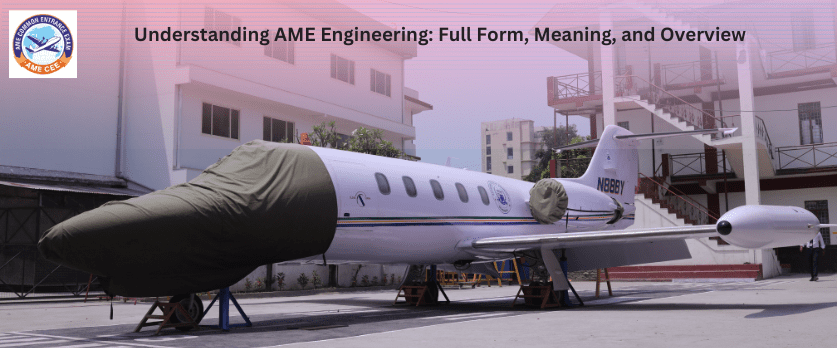AME stands for “Aircraft Maintenance Engineer.” An Aircraft Maintenance Engineer is a licensed professional responsible for ensuring the airworthiness of aircraft. These engineers play a crucial role in aviation safety by inspecting, maintaining, and repairing aircraft to meet regulatory standards.
Here are key aspects of the role and responsibilities of an Aircraft Maintenance Engineer
Maintenance and Inspection
When issues or malfunctions arise, AMEs are tasked with diagnosing problems and implementing effective solutions. This involves using technical knowledge and diagnostic tools to identify and address issues in aircraft systems.
Documentation and Record-Keeping
Accurate documentation of maintenance activities is a crucial aspect of the job. AMEs maintain detailed records of inspections, repairs, and modifications performed on aircraft to comply with regulatory requirements.
Compliance with Regulations
AMEs must stay updated on aviation regulations set by authorities such as the Federal Aviation Administration (FAA) in the United States or the European Union Aviation Safety Agency (EASA) in Europe. They ensure that all maintenance activities adhere to these standards.
Aviation Safety
Ensuring the safety of aircraft and passengers is a top priority. AMEs play a vital role in preventing and addressing safety issues to maintain the overall integrity and airworthiness of the aircraft.
Specialization Areas
AMEs often specialize in specific areas such as avionics (electronic systems), powerplant (engines), airframe (structural components), or a combination of these. Specialization allows them to focus on particular aspects of aircraft maintenance.
Continuing Education and Certification
AMEs undergo rigorous training and education to obtain certification. Continuing education is essential to stay current with technological advancements and regulatory changes in the aviation industry.
Quality Control and Assurance
Quality control is integral to aircraft maintenance. AMEs implement quality assurance measures to ensure that maintenance procedures meet high standards, contributing to the overall reliability and safety of aircraft.
Collaboration with Other Professionals
AMEs work closely with other aviation professionals, including pilots, air traffic controllers, and ground support personnel, to address maintenance needs and ensure the seamless operation of aircraft.
Ethics and Professionalism
Adherence to ethical standards and professionalism is crucial in the field. AMEs are expected to maintain a high level of integrity, accountability, and responsibility in their work.
Overall, Aircraft Maintenance Engineers play a critical role in maintaining the safety and airworthiness of aircraft, contributing to the smooth functioning of the aviation industry. Their expertise and attention to detail are essential for the reliability and security of air travel.
To become an aircraft maintenance engineer you may could join AME engineering through AME COMMON ENTRANCE EXAM (AME CEE) this examination you may join AME engineering approved by DGCA, EASA or UGC.


